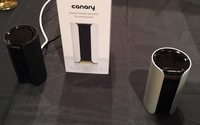 By Chuck Martin
By Chuck Martin
The Internet of Things is going to make more things automatic.
It’s not the actual things that will become automatic, but rather that connected things will automate more things for consumers.
There were many examples of this at CES in Las Vegas last week. None were necessarily earthshaking by themselves, but taken together, highlight one of the major early IoT waves.
A simple example of this would be the automatic unlocking of something. Car makers like Mini have had this for some time, so that when the owner nears their car, with FOB in their pocket or purse, the door unlocks. No key is involved and the consumer does not have to push any buttons.
With the deployment of many more sensors in many more places, more automatic unlocking will occur. Some examples of IoT automation from CES:
- The Kwikset lock shown at CES can be unlocked via the mobile app, but it also can be unlocked by touching the lock itself or by a visitor who is sent an unlock key via smartphone.
- Real-time facial analysis by SmartmeUp can be used for identification as part of a smart home.
- The Canary home security system is essentially a standalone home camera that can sit on a table and if someone enters the area, send a message and video feed to the owner. Canary initiates the messaging.
- Door locks from Schlage will be able to be opened via an Apple Watch and tie into entire smart home systems.
- When a wash is complete, a message from the Hisense clothes washer can send a message to the TV, if someone is watching.
- With the iHome smart sensor, lights can turn on when the door is opened, a fan turns on when home temperature rises or falls and lamps turn off when sunlight levels are high.
- With the new Plantronics headset, after a tap with an NFC-enabled phone, an audio message can be sent asking if the mobile payment amount is OK to be approved, adding quick authentication. Conceivably, lights could be turned on and off as the headset wearer enters or leaves a room.
This is where marketing and advertising can find a new home. Platforms that automate the facilitation of actions and the delivery of relevant content are being created.
This is when brands and agencies should be exploring where they fit in the new flow.










